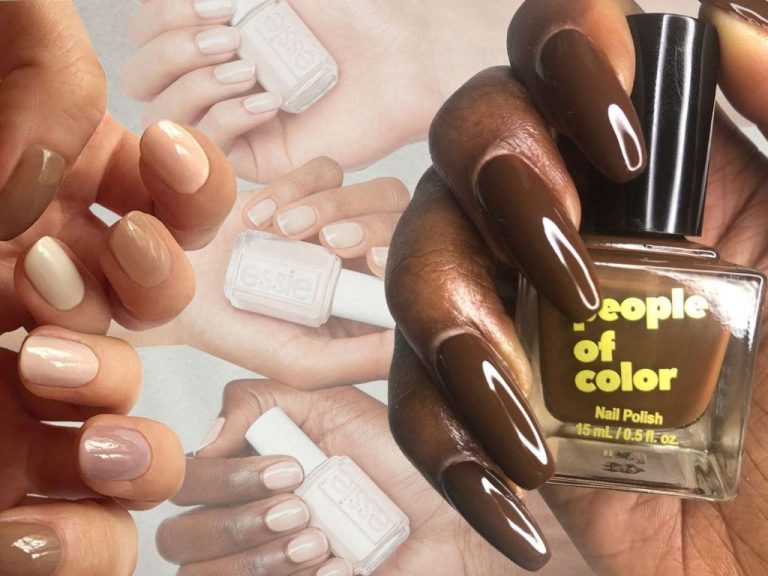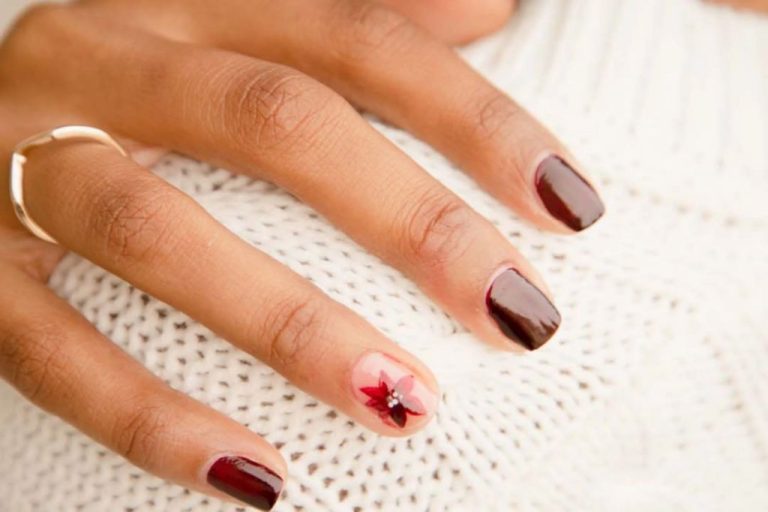Eco-Nail Essentials: Must-Have Products For Green Manicures
In recent years, there has been a growing trend towards eco-friendly and natural nail care products. Consumers are becoming increasingly concerned about the health and environmental impacts of traditional nail polishes and treatments, which often contain harsh chemicals like formaldehyde, toluene, and phthalates <1>. The nail care products market was valued at $19.1 billion in 2021 and is expected to grow at a CAGR of 5.2% from 2022 to 2030 <2>. This growth will be fueled in part by rising demand for plant-based, non-toxic nail polishes and treatments.
Consumers are seeking out eco-friendly nail products for a few key reasons. First and foremost is the desire to avoid exposure to harmful chemicals that have been linked to health issues like respiratory problems, hormone disruption, and cancer <3>. Using clean, non-toxic nail polishes and treatments can reduce this exposure. There is also a growing awareness of the environmental impact of some chemicals in conventional nail products, which can be toxic to aquatic ecosystems. Finally, many consumers simply prefer to align their beauty routines with their eco-conscious values and lifestyles.
The trend towards green nail care reflects wider consumer interest in clean, natural, and sustainable personal care products. As demand for eco-friendly manicures grows, there is great potential for new innovations in plant-based, non-toxic nail products that are better for both human health and the environment.
Natural Nail Polishes
Natural nail polishes are formulated using plant-derived ingredients like water, plant oils, flower extracts, and minerals instead of harsh chemicals like formaldehyde, toluene, and dibutyl phthalate (DBP) found in traditional polishes. The nail polish market size is estimated to reach $16.2 billion by 2030, and natural nail polish is driving a lot of this growth as consumers demand safer products.1
The main benefits of natural nail polishes include being non-toxic, vegan, cruelty-free, and better for the environment. Plant oils like castor oil help condition nails and flower extracts provide pigment. Natural formulas are gentler on nails and cuticles. Top recommended natural nail polish brands are Zoya, Honeybee Gardens, Kure Bazaar, and Sula.
Vegan Nail Polishes
Vegan nail polishes are free of animal-derived ingredients like beeswax, carmine, gelatin, and keratin. These ingredients are commonly used to help nail polish adhere better and last longer on nails.
Some animal-derived ingredients to avoid in nail polish include:
- Beeswax
- Carmine
- Guanine
- Keratin
- Tallow
Top recommended vegan nail polish brands include:[1]
- Zoya
- Pacifica
- Kure Bazaar
- Orly
These brands offer extensive vegan nail polish collections in a variety of trendy colors and finishes. Their formula is free of animal ingredients yet provides the same durability and shine.
Non-Toxic Nail Polish Removers
Traditional nail polish removers often contain chemicals like acetone and ethyl acetate which can be drying and damaging to nails and skin over time. Exposure to these harsh chemicals has been linked to conditions like contact dermatitis, eye irritation, and headaches.
Thankfully, there are now many natural, non-toxic alternatives available. These gentler formulas are free of acetone, ethyl acetate, and other concerning ingredients. Popular alternatives include oil-based removers with ingredients like coconut oil, vitamin E, sunflower seed oil, and essential oils. There are also acetone-free removers made with less harsh solvents like dimethyl glutarate.
Some top natural nail polish remover brands include Ella + Mila, Acquarella, Piggy Paint, and Karma Organic Spa. These removers effectively take off polish while nourishing nails and cuticles.
Transitioning to a non-toxic nail polish remover is an easy way to reduce exposure to harsh chemicals and practice self-care. With so many natural options now available, there’s no need to settle for removers full of acetone and other toxins.
Eco-Friendly Nail Tools
Standard nail tools like emery boards, metal files, and cuticle pushers often cannot be recycled and end up in landfills. The abrasive part of emery boards is not biodegradable. Metal nail files also contain chemicals and rely on mined metals. Luckily, there are more sustainable options.
Instead of traditional emery boards, try reusable glass, ceramic, or crystal nail files. These can last for years with proper care and do not generate waste. Wood and cardboard emery boards are compostable alternatives. Cuticle pushers made of wood, glass, or stainless steel are also available. Opt for sustainable materials like bamboo in nail clippers and tweezers.
Some top eco-friendly nail tool brands include Glassouse, Karma Nails, and Nature’s Spirit. Investing in quality sustainable tools helps reduce waste from single-use disposable options.
Non-Toxic Nail Salons
Traditional nail salons often use products containing harsh chemicals like formaldehyde, toluene, and dibutyl phthalate. Exposure to the fumes from these chemicals poses health risks to both nail technicians and clients. Poor ventilation exacerbates the problem. According to the National Library of Medicine, nail salon workers experience higher rates of respiratory issues, skin irritation, headaches, and other negative health effects from chemical exposure.
When looking for a non-toxic nail salon, seek one that uses plant-based polish brands free of the “toxic trio.” Ask about their ventilation system – it should actively circulate fresh air. Some green salons go a step further by using portable HEPA filters or exhaust hoses during manicures. You can also look for salons certified by organizations like Green America or Well+Good.
For DIY non-toxic manicures at home, work in a well-ventilated area and consider wearing a mask. Opt for water-based nail polishes free of harmful ingredients. Use acetone-free removers and tools like glass nail files that can be sanitized. Allow nails to breathe regularly by giving them a break from polish. Overall, being mindful about chemical exposure will help you achieve pretty, eco-friendly nails.
Nail Care Ingredient Guides
When shopping for nail products, it’s important to be aware of harsh chemicals commonly found in conventional options. Here’s an overview of some key ingredients to avoid:
Phthalates – Phthalates like dibutyl phthalate (DBP) are often added to nail polish to make it more flexible and less brittle. However, research shows phthalates are endocrine disruptors that can cause hormone and reproductive issues. They are absorbed through the nail and skin (1).
Toluene – A solvent used in nail polish to help it dry quickly. Linked to immune system toxicity, reproductive damage, respiratory problems, and may affect brain development (2).
Formaldehyde – Added to strengthen nail polish and prevent chipping. A known carcinogen that has been associated with cancer and allergies when exposure occurs over a long time (3).
Triphenyl phosphate – Another plasticizer used to help nail polish flexibility and durability. Suspected endocrine disruptor and organ toxicity with repeated exposure (3).
The key is to read ingredient labels and avoid these concerning chemicals when possible. There are many non-toxic nail polish options available today.
(1) https://www.nontoxicrevolution.org/blog/2019/6/12/non-toxic-nail-polish
(2) https://www.pritinyc.com/10-Nail-Polish-Toxic-Ingredients-You-Must-Avoid_b_4.html
(3) https://www.thecut.com/2023/04/what-toxins-are-in-nail-polish.html
Sustainable Nail Care Habits
There are several habits we can adopt to make our nail care routines more sustainable and eco-friendly:
Always make sure to tightly cap nail polish bottles to prevent them from drying out. This extends the life of the polish and reduces waste from buying replacements. Consider buying polishes in bulk sizes or refills when possible, as this cuts down on packaging.
Invest in a non-acetone nail polish remover, which is less harsh on the environment. Brands like Ella+Mila and Zoya make removers with plant-based ingredients. You can also find reusable cotton pads to cut down on waste.
Recycle empty bottles and dispose of nail supplies properly. Some salons collect empties to send to recycling facilities. At home, remove any remaining product and place empty bottles in the recycling bin.
Choose polishes, tools, and products from green, non-toxic brands whenever you can. Look for natural, vegan, and cruelty-free ingredients. Popular eco-friendly nail brands include RGB, Karma Organic Spa, and Scotch Naturals (Scratch Magazine).
Opt for low-waste manicures by skipping extras like nail art and glitter polish that create more waste. Try asking your nail tech to skip the plastic toe separators and instead use reusable silicones.
Overall, being mindful of nail product ingredients, packaging, and application techniques can help reduce the environmental impact of your manicures.
Closing Thoughts
In summary, we’ve covered the major product categories important for an eco-friendly manicure routine. This includes natural nail polishes free of harmful ingredients, vegan nail polishes not made with animal byproducts, non-toxic nail polish removers without acetone or formaldehyde, eco-friendly nail tools made of sustainable materials, and choosing non-toxic nail salons. We also looked at some key ingredients to understand and avoid in conventional nail products, as well as sustainable nail care habits to adopt.
The importance of green nail products is clear – they allow us to indulge in beautifying manicures while avoiding exposure to the many concerning chemicals used in standard nail care items. As consumers become more aware of the health and environmental consequences of these ingredients, we expect the demand for clean, non-toxic nail products to continue growing rapidly. Industry experts predict the global green nail care market will expand at a CAGR of over 7% from 2022-2030, as brands respond to consumer demand with innovative natural formulas and sustainable packaging.
The future looks bright for eco-conscious manicures. With the innovations in plant-based ingredients and biodegradable packaging emerging, it’s becoming easier than ever to enjoy beautiful nails guiltfree. Brands that get ahead of the clean nail care trend stand to capture significant market share as it gains momentum. Though the industry has progress to make, the trajectory points towards more sustainable, ethical and non-toxic nail products that are better for both people and planet.
References
[1] Statistic on rise in natural nail polish sales from 2021 Nail Polish Consumer Report by Organic Beauty Research. https://www.organicbeautyresearch.com
[2] Information on toxic ingredients in conventional nail polish from Toxic Free Nails campaign by Breast Cancer Prevention Partners. https://www.bcpp.org/resource/toxic-free-nails/
[3] Data on increase in vegan lifestyle from The Vegan Society’s Veganism Report 2022. https://www.vegansociety.com
[4] Overview of non-toxic nail polish removers from “Guide to Safe Nail Polish Removers” by Safemama. https://safemama.com/
[5] Tips for reducing waste from nail care from “Sustainable Nail Salon Guide” by My Green Closet. https://mygreencloset.com/




